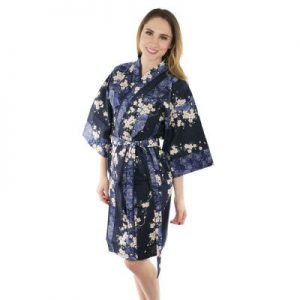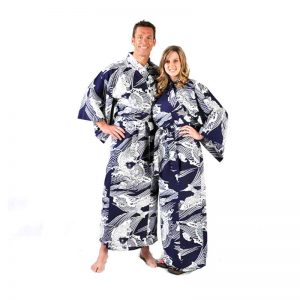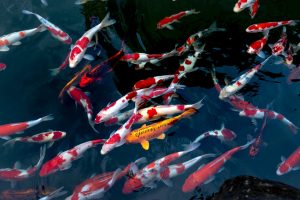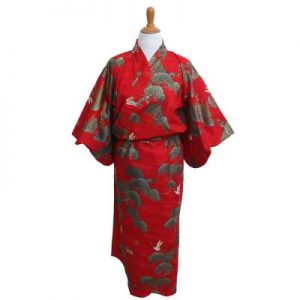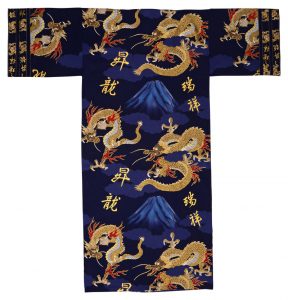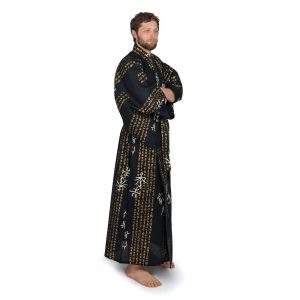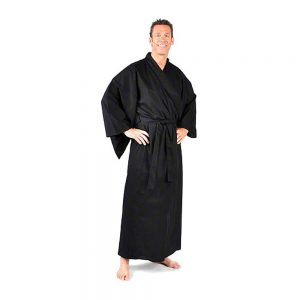What is a kimono?
Kimonos have become a fashion staple in recent years. Many people are still unaware of the history and culture that is associated with this famous type of clothing. As an iconic piece of Japanese tradition, kimonos carry a wealth of cultural meaning. A kimono is a traditional Japanese robe that is typically made of cotton or silk. They are known for their beautiful lines and shapes, intricate patterns, bright colors, and elegant fabrics. It’s no wonder why so many people admire this traditional garment. Kimonos are usually worn during special occasions, such as weddings or tea ceremonies, or for a more formal appearance.
How is a kimono worn?
First, choose the right size kimono for your body type. It should be snug but not too tight. Second, select the appropriate length based on your height. Third, determine which style of kimono you would like to wear. Do you want a casual kimono for lounging, and hanging out with family and friends? Do you want a more formal style that can be worn to a ceremony, wedding, or special gathering?
Most kimonos and yukatas today are made for everyday use and are easy to wear. Slip one on just like a bathrobe, folding the left side over the right and then tying it with the belt, sash, or obi. Which way you fold the front of the robe is very important. Wearing it folded right over left signifies death and is usually reserved for a funeral.
How do I tie a kimono obi?
The kimono is worn like a bathrobe and folded over in front, left over right. A belt, sash, or obi is then used to wrap around the waist. Gently tie and this holds your robe in place and keeps it closed. A formal kimono often has a broad sash and is tied at the back reflecting the age and social status. The yukata´s obi sash ties in front to emphasize its casual nature. Whether you choose to experience the traditions associated with wearing kimono or relax in a breathable summery yukata, each has its unique beauty.
What is the difference between a yukata and a kimono?
Although these garments look similar, kimonos are generally more formal. Kimonos feature intricate patterns produced in high-quality cotton and silk. While yukatas are designed for daily summer wear, they are made of cotton and feature simpler designs. Kimonos usually extend to around ankle length, while the cut of yukata offers several lengths from longer to shorter.
How do I take care of a kimono?
When caring for kimonos and yukatas, it is important to take precautionary measures that will protect the cloth and its designs. To keep kimonos and yukatas in their best condition, store them in a dry place away from direct sunlight. Regularly spot clean kimonos with a damp cloth, but avoid washing them in hot temperatures which can shrink the fabric and affect the design.
If your robe is machine washable, we recommend cold water washing on a gentle cycle. Look at the manufacturers instructions or tag that is sewn in to the robe. Follow these instructions to maintain the longest life of your garment. Whether they suggest dry cleaning, hand washing or machine washing, be gentle and you will extend the life of your beautiful Japanese robe.
How do I choose the right size kimono?
When considering kimonos, you should consider both your height and your body shape. If you’re petite, look for kimonos tailored for smaller frames. If you’re taller or plus-size, kimonos made for those sizes will fit better. Quality matters too; higher-end kimonos usually are made with a heavier fabric and some will even have layers. This gives it a more elegant feel, exceptional comfort and can be the reason for the higher cost.
For yukatas, focus on fabric type as much as fit. Check that the material isn’t so coarse that it’s uncomfortable against your skin. Some vendors offer yukatas with a shrink-resistant finish which provides a softer feel. Ultimately, remember there’s no one “correct” size when it comes to kimonos or yukatas. Choose the one that fits your body best and makes you feel confident.
The best place to start when trying to find the perfect kimono size is to measure yourself. Draw a measuring tape around your waist, chest, and sleeve length to get an idea of what sizes you’ll need. You can also enlist the help of online store customer service for advice on the perfect kimono fit for you.
Where can I buy a kimono?
Shopping for kimonos and yukata has never been easier. A wide variety of retailers offers these traditional Japanese garments. From boutiques to online stores and kimono-specialty shops, you are sure to find the perfect kimono for your wardrobe or gift needs. Many stores even offer kimonos and yukatas in a range of sizes and fabrics that suits both men’s and women’s fashion. With some prior research, you can also find kimonos made from exclusive fabrics as well. Kimono shopping doesn’t have to be intimidating. With so many options available, finding your perfect kimono is now just a few clicks away!
The key to finding your new kimono is to locate a reputable dealer. Locate one that has been in business for many years or decades. One that is honest and trustworthy. Don’t fall for the trap of some online dealers that claim they are Japanese-style, but actually made in China or elsewhere. A scan of Amazon, Etsy and eBay and you can locate some of these dealers that are less than truthful.
We recommend dealing with a vendor located in the USA. This way, returns are easier, shipping is a fraction of the time and unless you speak another language, English is spoken, used and easy to understand. A reputable dealer will list the details of the kimono or yukata in the description box. There should be no second guessing yourself. Their policies should be clear and distinct.
Another way to determine if the dealer is the “real-deal” is selection. Do they offer a large selection in many sizes? A shop that only offers a dozen robes isn’t really in the kimono business, but rather it is a side business. Chopa – Your Kimono Source was established in 1994 and carries over 100 different patterns, colors and sizes for men, women and kids. It’s obvious that this is their business. They aren’t offering kitschy Asian home décor items and spreading their efforts thin. They deal with what they do best – Kimonos and Yukatas. You can check out their online Kimono Shop here. Happy shopping and congratulations on your new wardrobe.
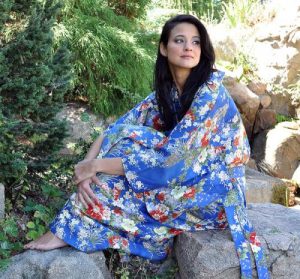
Hanu Garden Kimono



